Evergreen trees decorated with lights, garland, and ornaments have become a staple in most households that celebrate Christmas, however, these trees haven’t always been a symbol of the upcoming holiday. In fact, just like many aspects of Christmas, they have gained popularity since the Victorian era. Let’s take a short look at the history of Christmas trees and how they ended up in our homes.
Ancient traditions using greenery
Many believe that the history of Christmas trees can be traced to ancient pagan traditions. Since evergreen trees stayed green throughout the cold months, they have long been revered. Ancient Egyptians worshipped the god Ra and believed that Ra grew sick each winter. Each winter solstice, the shortest day of the year, Ra began to recover from his sickness. Egyptians decorated their homes with greenery to celebrate Ra’s triumph over death.
Similarly, Romans found plants that remained green all year and decorated their homes with evergreen branches to honor Saturn, the god of agriculture, and celebrate the approach of spring.
Was Martin Luther the first to decorate a tree?
The Christmas trees like we see today didn’t arrive on the scene until 16th-century Christians started the tradition in Germany. Christians would either bring a tree until the house or build a wooden pyramid and decorated it with evergreen branches when wood was scarce. German immigrants would eventually bring the tradition to North America, decorating the trees with nuts, fruit, and marzipan cookies.
It is debated why Christians adopted the pagan tradition, but stories say that Martin Luther was the first to put candles on the trees. He was walking late one night and was
Christmas traditions spread, slowly
Christmas trees were not widely accepted in American at first due to the Puritans’ strict rules on celebrating the winter holiday. Christians started celebrating Jesus Christ’s birth when Pope Julius I chose December 25thfor the Feast of Nativity. It is believed that this was chosen to coincide with the pagan celebrations of the winter solstice to more easily convert pagans to Christianity.
The popularity of the December holiday spread by the eighth century, but how the holiday was celebrated varied from country to country. Fast-forward to 17th-century Puritan Christmas reform, when Oliver Cromwell and his allies took power England in 1645 and, among other things, canceled Christmas due to its pagan roots. The holiday was restored when Charles II again took the throne, but the Puritan animosity towards the holiday endured and spread to the New World.
Pilgrims in New England, under the governance of William Bradford, honored the birth of Jesus but found any frivolity or pagan symbolism, such as the Christmas tree, as sinful. In Boston, Massachusetts, any observance of the holiday other than attending church was against the law from 1659 to 1681.
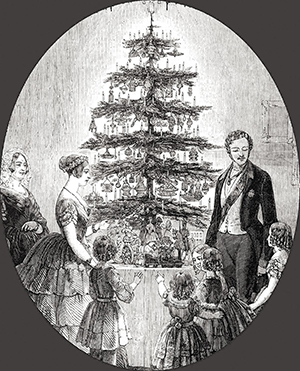
Celebrating Christmas and decorating trees did not become popular again until the Victorian era. England in 1846, Queen Victoria and German Prince Albert were sketched with their children around a decorated tree. Due to the Queen’s popularity, decorated trees were relevant again. Despite Puritan sentiments on trees, German immigrants in America continued to decorate trees and the practice of ordaining evergreens became a tradition in many American homes.
Since the mid-1800s, blown-glass ornaments have replaced fruits or nuts and electric lights have replaced candles. Trees now sit in store windows and giftsplaced by Santa Claus surround the trunk. Yet these evergreen trees, in a way, still stand to celebrate life in the harshness of winter as they once did for Egyptians and Romans.
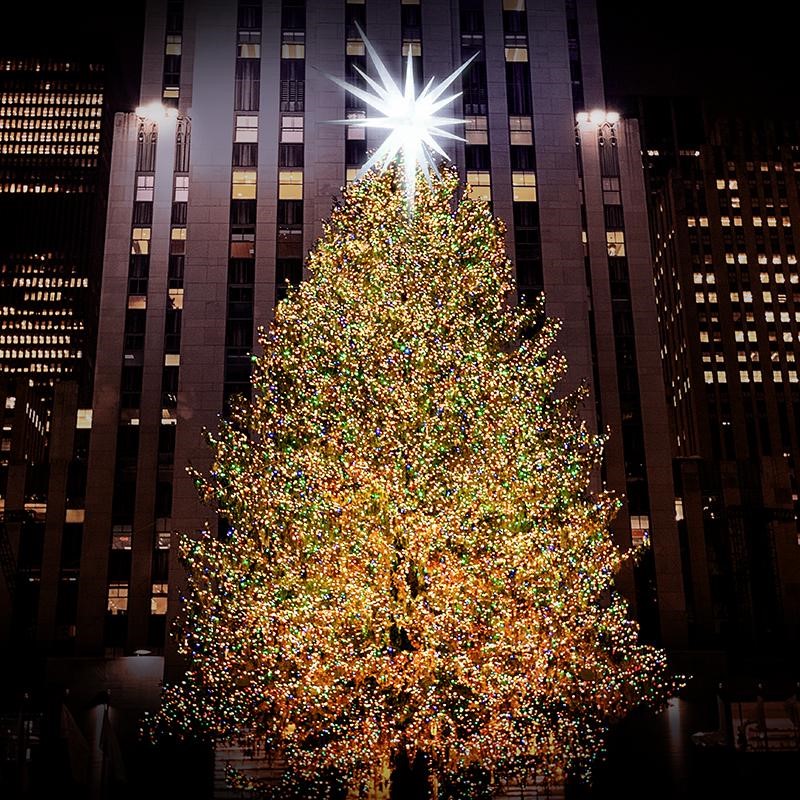
Create your own Victorian Christmas ensemble
— by Faith Briggs

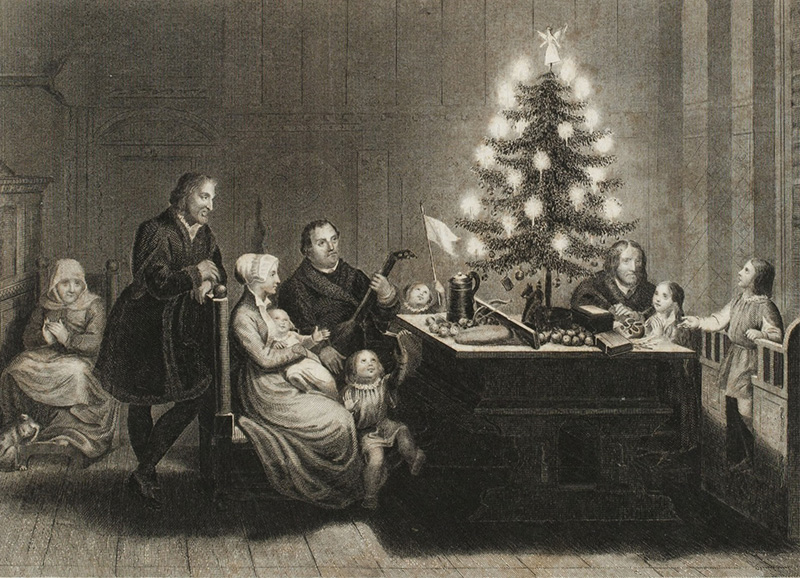
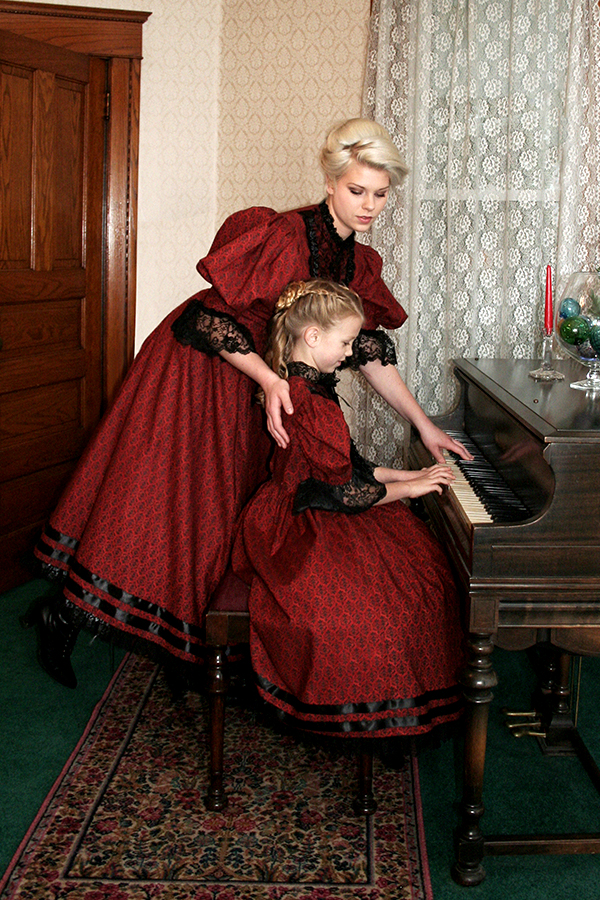
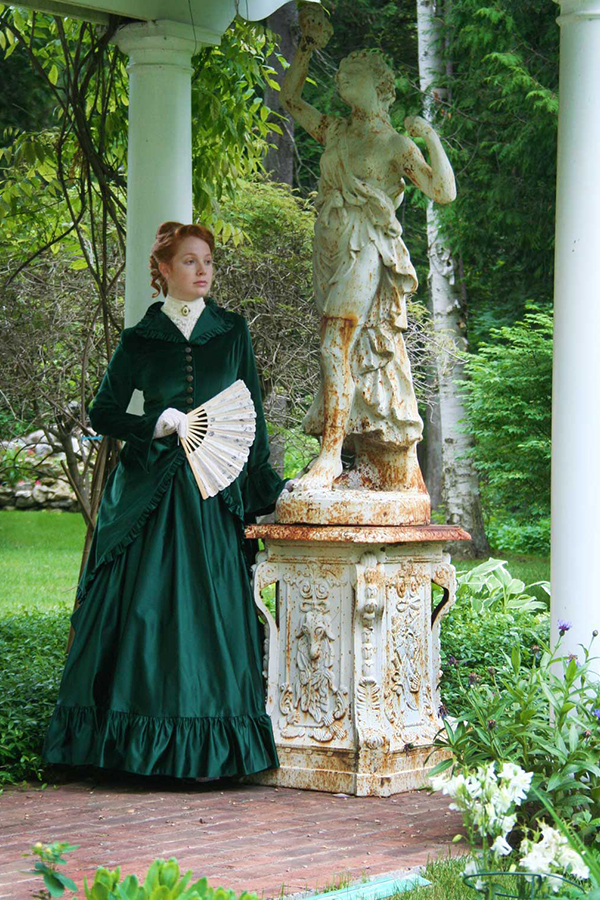











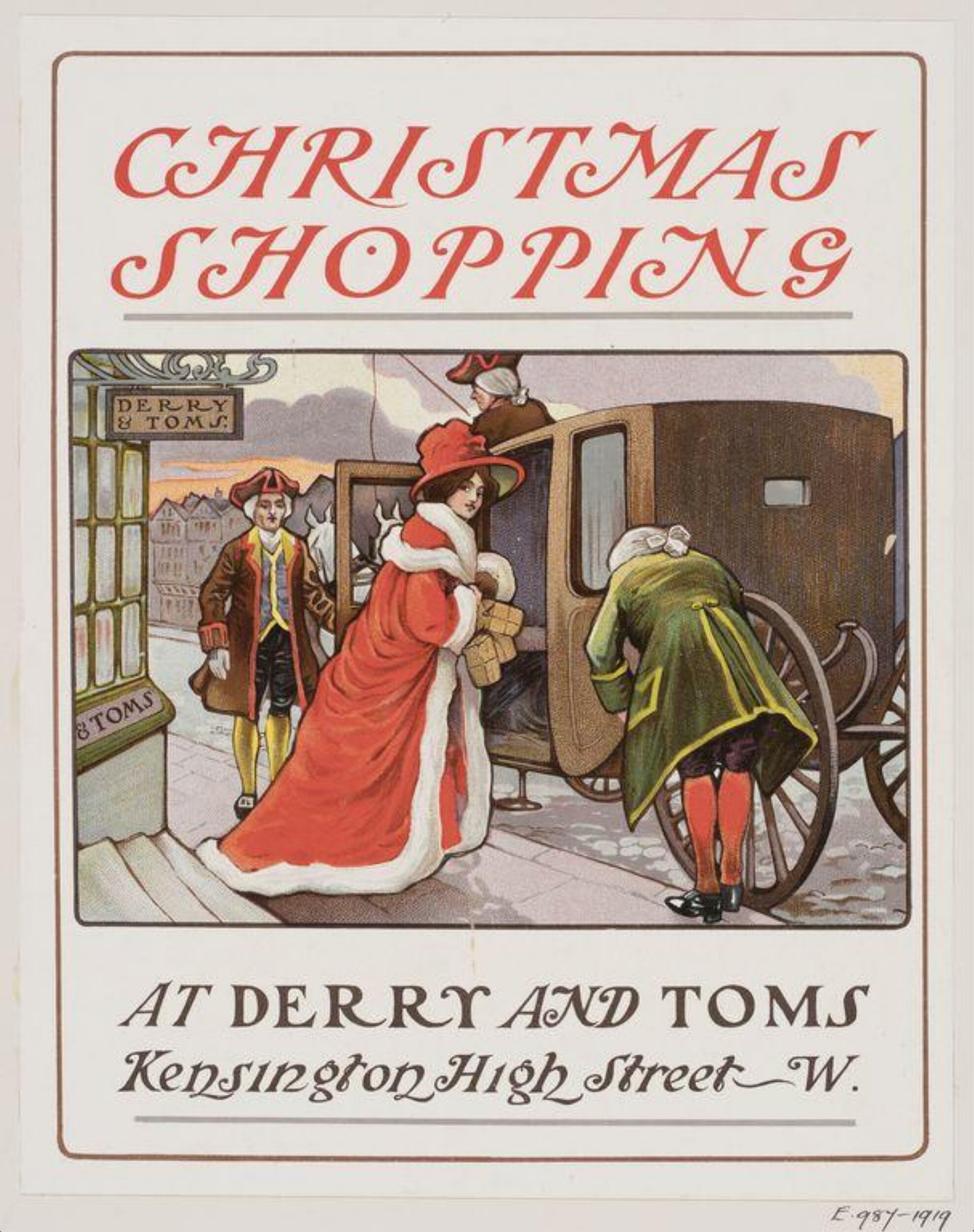
A love a good history behind something. I for one, am glad that we Christians adopted the Christmas Tree tradition as it’s a holiday I look forward to every year. I head out to the local tree farms, chop one down and carry on the tradition started so long ago. I think it’s great! Thanks for the insight!
This was a great informative article and thank you for taking the time to write this. There was so much information in there that I did not know about before. Keep up the great work.
Great article! I knew most of the information about the history of the christmas tree but the martin Luther part was new.
Lovely Article, thank you for posting it. You could go farther back to the Celts decorating everygreens to celebrate life during winter when everything else was “dead”
Dame Veronica Graunwolf KTI